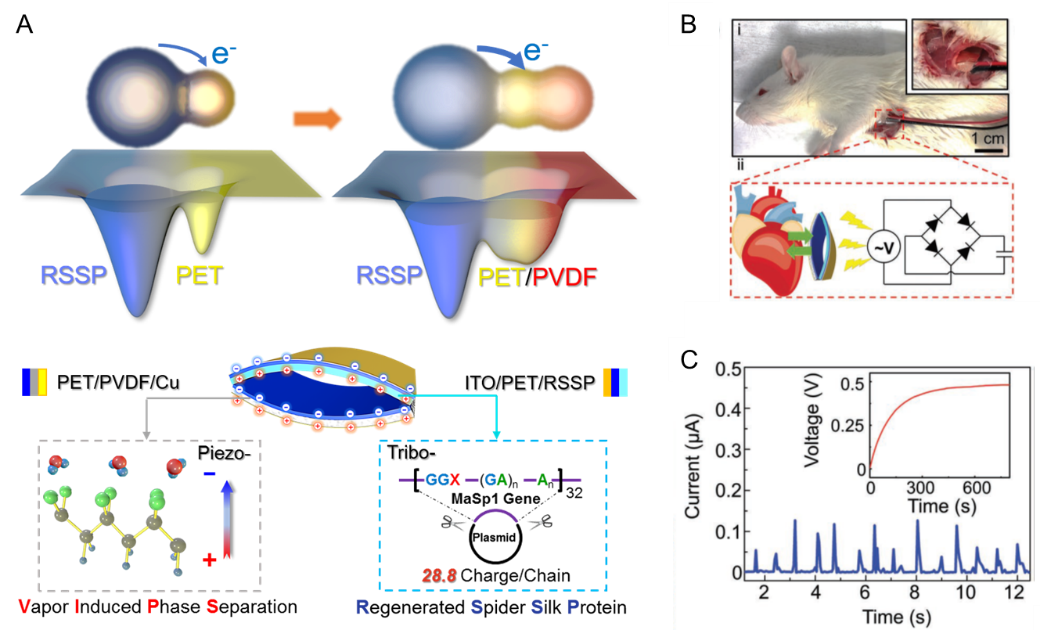
In the era of the Internet of Things, sensors, portable electronics, wearable devices, and wireless transport systems are increasing the demand for renewable and green energy supplies. Triboelectric nanogenerators (TENGs) have been actively investigated and extensively developed, aiming for efficiently converting environmental mechanical energy into electricity for powering so-called self-powered sensors or systems.
However, some challenges, such as the large internal resistance, the low frictional efficiency, material inefficiency for losing/gaining electrons, and lack of biocompatibility still remain to be overcome before current TENGs can be widely put into practical applications.
To overcome these drawbacks, Prof. Tiger H. Tao, Prof. DING Guqiao and their team from Shanghai Institute of Microsystem and Information Technology, Chinese Academy of Sciences, have developed a "self-matched" tribo-piezoelectric nanogenerator composed of genetically engineered recombinant spider silk protein and piezoelectric poly(vinylidene fluoride) (PVDF). This work was presented in the recently published cover article in Advanced Materials.

Fig. 1. This work was selected as the cover article of Advanced Materials (Image by SIMIT)
Specifically, the PVDF generates a strong piezo-potential that modifies the surface potential of a middle matching layer (PET) to match the electron-transfer direction of the spider silk during triboelectrification (Fig. 2). A "vapor-induced phase-separation" process is developed to enhance the piezoelectric performance in a facile and "green" roll-to-roll manufacturing fashion.
The devices show exceptional output performance and energy transformation efficiency among currently existing energy harvesters of similar sizes and exhibit the potential for large-scale fabrication and various implantable/wearable applications.
The self-matching theory and corresponding device configuration presented among this work will greatly promote the development of green energy and self-powered sensor systems, which gain more attention in the future.

Fig. 2. The self-matching theory, device configuration and demonstration of implantable organ monitors as well as bioenergy harvesters. (Image by SIMIT)
This work was partially supported by the National Science and Technology Major Project from Minister of Science and Technology of China, the National Science Fund for Excellent Young Scholars, the National Natural Science Foundation of China, the Shanghai Outstanding Academic Leaders Plan and the State Scholarship Fund from China Scholarship Council.

86-10-68597521 (day)
86-10-68597289 (night)

52 Sanlihe Rd., Xicheng District,
Beijing, China (100864)

